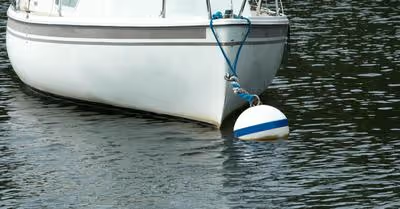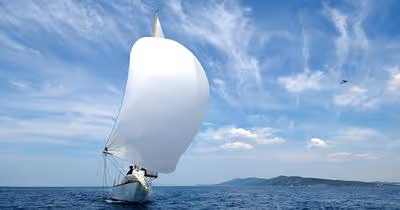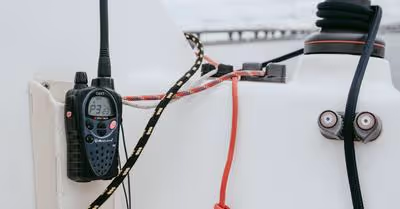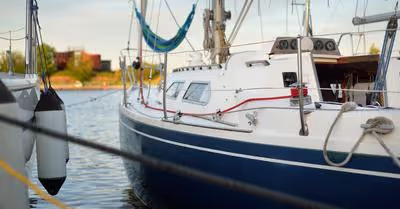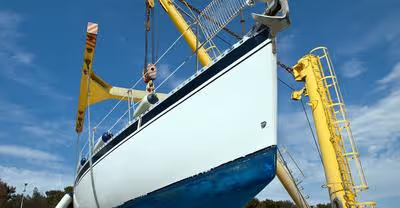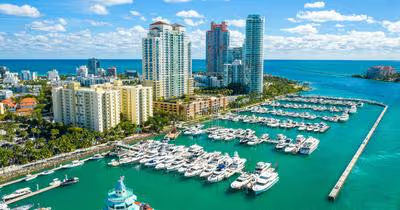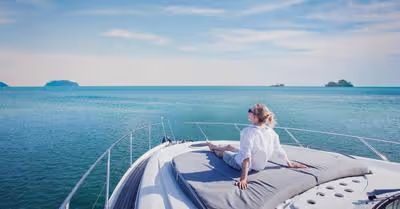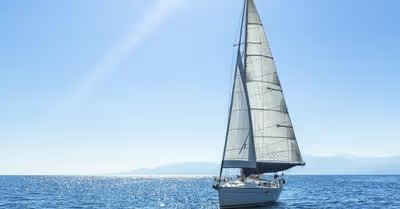Table of Contents
What is the Average Cost of Sailboat Insurance?
The average cost of sailboat insurance is $200-$500 per year. However, this is the average cost of the moderately designed sailboats, and their measures are between 20-40 feet. A 40 feet sailboat insurance can also cost around $1,000, depending on its amenities.
If you have a more luxurious sailboat, like a yacht, the insurance cost can shoot over $2,000 annually.
This insurance is designed to protect your investment in your sailboat and give you peace of mind in case of an accident or other incident. The cost of the policy will depend on the value of your boat, the size of the boat, and the location where you keep it. You can get a discount on your premium if you take a boating safety course or have a clean driving record.
What Factors Affect Boat Insurance Costs?
The cost of insurance for the sailboat is not that straightforward. Various factors play a part in swinging the price one way or the other. Let’s look at which factors affect the liveaboard sailboat’s cost the most.
Type of Sailboat
The type of sailboat you have can affect your insurance costs in a few different ways. First, the size of the boat will be a factor. Larger boats are generally more expensive to insure than smaller ones.
Second, the type of sails the boat has can also affect cost. Boats with racing sails are often more expensive to insure than those with leisure sails.
Finally, the age and value of the boat will also play a role in determining insurance costs. Generally speaking, older boats are less expensive to insure than newer ones. However, if your boat is particularly valuable, it may cost more to insure. Work with your insurance agent to determine what sailboat insurance coverage is right for you based on these factors.
Sailboat Age
Sailboat insurance rates are based on various factors, one of which is the vessel’s age. Older sailboats tend to be more expensive to insure than newer ones for various reasons.
First, older sailboats are more likely to have maintenance and repair issues than newer boats. They have been used more and may not have been as well-maintained as newer boats. As a result, insurers see them as a higher risk and charge higher premiums.
Second, older sailboats may not have all the latest safety features that newer boats have, making them a higher risk to insure.
Finally, Sailboat Age affects sailboat insurance costs because the market value of older boats is usually lower than newer boats. So, if an insurer has to pay out on a claim for an older boat, they are likely to get less money back from the sale of the boat than they would for a new boat.
All these factors make older sailboats more expensive to insure than newer ones. So, if you’re thinking of buying an older boat, be prepared to pay higher premiums.
Engine Capacity
A larger engine will typically result in a higher premium, as it is more expensive to repair or replace.
Of course, the size of your boat’s engine is not the only factor that insurers will consider. Other considerations can include the value of your boat, where it is usually moored, and how often you use it. However, you will likely pay more for your cover if you have a larger engine capacity.
So, if you’re looking to keep costs down on your sailboat insurance, it’s worth bearing in mind that a smaller engine may well be one way to do this. Of course, you’ll need to make sure that your boat still has enough power to get you where you want to go! But if you’re not planning on venturing too far from shore, then a smaller engine could help keep your premiums down.
Sailboat Condition
The condition of your sailboat can have a significant impact on how much you pay for insurance. If your boat is in good condition, you’ll likely pay less for insurance than if it’s in poor condition. Sailboats that are well-maintained and have up-to-date safety equipment tend to be cheaper to insure than those that don’t.
The type of sailing you do can also affect your insurance rates. If you sail in areas with lots of traffic or bad weather, you’ll probably pay more for insurance than if you sail in calm waters. It’s important to let your insurer know where you plan to sail so they can give you an accurate quote.
If you’re looking to save money on your sailboat insurance, it’s essential to keep your boat in good condition and be honest about where you’ll be sailing. You can get the best possible rate on your policy by doing so.
Location
When it comes to sailboat insurance, location is one of the key factors affecting your premium. If you keep your boat in a high-risk area, you can expect to pay more for coverage than if you keep it in a low-risk area.
There are a few things insurers take into account when determining risk: weather patterns, crime rates, and the availability of rescue services. Let’s take a closer look at each of these factors:
Weather Patterns
If you keep your boat in an area with high winds or severe storms, you can expect to pay more for coverage. This is because there’s a greater chance that your boat will be damaged in a storm.
Crime Rates
Areas with high crime rates are also considered high-risk for sailboat insurance. This is because there’s a greater chance that your boat will be vandalized or stolen.
Availability of Rescue Services
If you keep your boat in an area with limited access to rescue services, you can expect to pay more for coverage. This is because it will be more difficult for rescuers to reach you if you get into trouble.
So, if you’re looking to save money on sailboat insurance, it’s a good idea to choose a low-risk location in all of these categories.
Sailboat Value
The value of your sailboat will have a direct bearing on your insurance costs as a liveaboard. In most cases, the higher the value of your vessel, the more expensive it will be to insure. However, several other factors will also affect your premium, including the age and condition of your boat, as well as the length of time you plan to live aboard. It is advisable to get quotes from a few different insurers before deciding, as rates can vary significantly from one company to the next.
Owner Age
As a broad rule, the younger you are, the more expensive your liveaboard sailboat insurance will be. This is because younger boat owners are considered at higher risk than older boat owners.
There are several reasons for this: firstly, younger people are generally less experienced in boating, making them more likely to make mistakes that could result in an accident. Secondly, younger people are more likely to take risks when they’re out on the water. Again, this increases the chance of an accident occurring.
Of course, there are always exceptions to the rule. Some insurers may offer cheaper rates to young liveaboards who have extensive boating experience or completed a boating safety course. It’s always worth shopping around and comparing quotes from different insurers to see who will offer you the best deal.
What are the Benefits of Buying Liveaboard Sailboat Insurance?
Sailboat insurance is one of those things that liveaboard sailors often overlook. After all, if you’re living on your boat full-time, what could go wrong? Unfortunately, accidents happen, and even the most experienced sailors can find themselves in a bind. That’s why it’s vital to have sailboat insurance - to protect yourself, your boat, and your belongings in case of an accident or other unforeseen event.
There are many benefits to having sailboat insurance, including peace of mind. If something does happen to your boat, you’ll be covered financially. That means you won’t have to worry about how you’ll pay for repairs or replacement costs. Sailboat insurance can also give you access to 24/7 emergency assistance to get help when you need it most.
Sailboat insurance is relatively inexpensive, especially when you consider the peace of mind it can provide. If you’re a liveaboard sailor, make sure you’re fully protected by investing in a sailboat insurance policy. You’ll be glad you did if something goes wrong.
Types of Sailboat Insurance Coverage
Basic Liability and Salvage Coverage
Basic liability insurance covers damages you may be responsible for up to your policy limit, which could include damage to another boat, injuries to someone else, or property damage. Salvage coverage pays for the costs of recovering your boat if it sinks or is otherwise disabled.
You may also want to consider additional coverage for medical expenses, loss of personal belongings, and trip interruption. Talk to your insurance agent to ensure you have the coverage you need.
Specialized or Custom Coverage
While most sailboats are designed for coastal or inland waters, only a small number are for extended open-ocean voyages. These “liveaboard” sailboats must be carefully outfitted and insured to handle the challenges of long-term ocean travel.
Specialized coverage is available for liveaboard sailboats, protecting the vessel and its occupants. Custom coverage can be tailored to the unique needs of each liveaboard, ensuring that all risks are properly covered. In addition to standard hull and liability insurance, liveaboard coverage may include provisions for medical evacuation, lost or stolen personal belongings, and sea rescue services.
Working with a specialist insurer allows liveaboard sailors to rest easy, knowing that their boat and voyage are appropriately protected.
Recent Articles




